Rice and Gerry’s Patent – The First Stem-Wind Stem-Set Mechanism Used in American Watch Production, Revisited
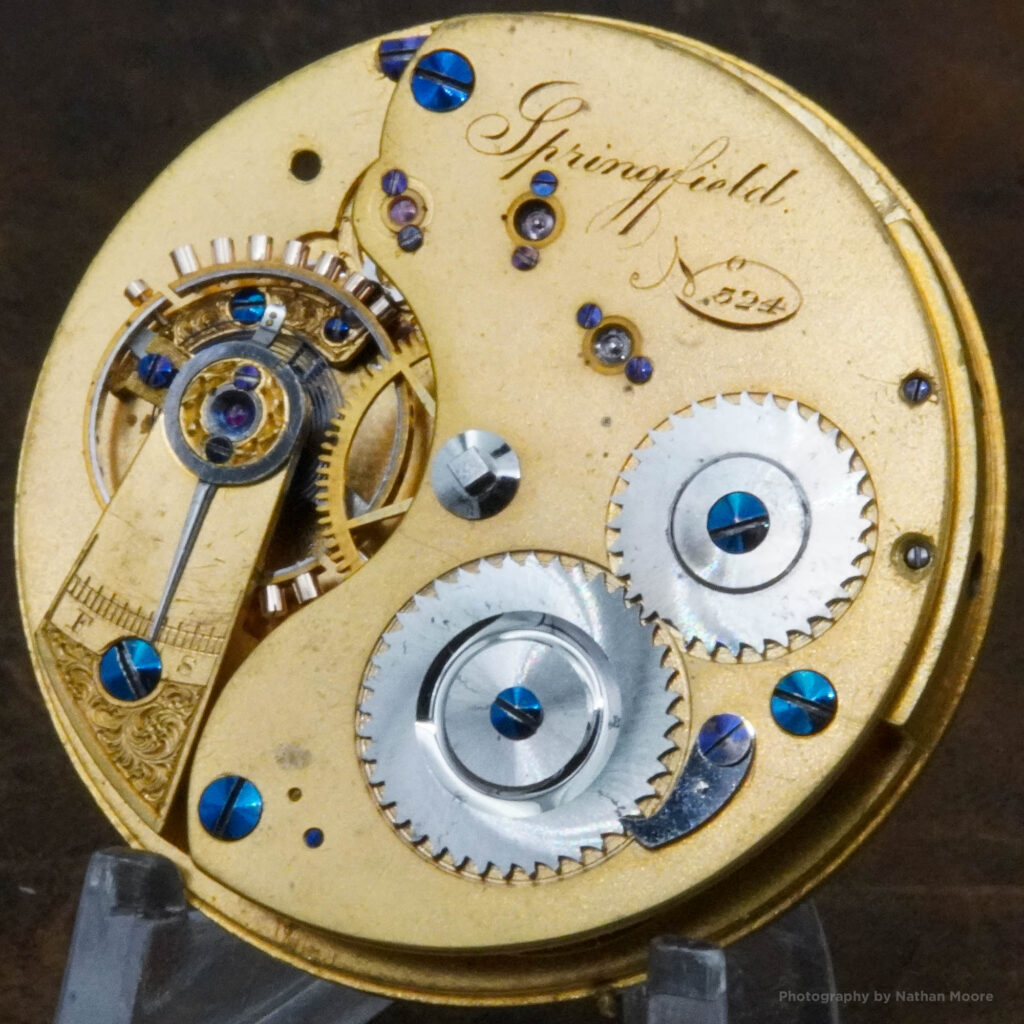
A few months ago, I posted a brief study on Edwin H. Perry’s patented stem-setting mechanism utilized in the construction of the first watches from the Adams & Perry factory.
Following the post, a reader became curious whether Perry’s design was the first stem-wind/stem-set mechanism used in standard production at an American watch factory.
The archive of horology patents issued by the United States patent office is the best resource for analysis. There may have been other designs that were either not patented or international implementations. The first American patent granted for the shifting sleeve pendant-set concept was issued to Charles Lehmann on July 24, 1866.
Lehmann describes his invention in the patent application:
“My invention has reference to the combination of a key or winding device with a pendant which presents as its peculiarity the employment of a single inflexible rod to operate the mechanism of the minute-wheels and that which winds up the barrel.
For moving the hands there is no accessory stem on the back it is only necessary to draw the stem of the key which is provided with two superposed groves, into one of which alternately a spring-catch works, forming a stop. This stop holds the rod or stem in its proper position, when, by rotating it in the proper direction, the watch may be set to the hour – that is to say, the hands may be moved in either direction without interfering at all with the other mechanism.
Upon pushing in the rod or stem to its normal position the watch may then be wound. The mechanism by which this result is accomplished is arranged in a manner analogous to that of a Breguet key. The hands remain in the meantime in a state of repose.” U.S. Patent #56683
The patent documentation suggests Lehmann’s central location as Paris, France, so it is possible this mechanism was used in some French watches. To my knowledge, it was never utilized in American production.
A slightly earlier patent was granted to Ferd Adolph Lange on May 15, 1866. While similar in design, Lange’s concept relied on a removable key to engage the setting mechanism. For this reason, it would not fully qualify as a true pendant-set movement despite the improvement over the lever and pin-set mechanisms being used at the time.
The first pendant-set mechanism used in standard production in America was a variation of Oliver P. Rice & James H. Gerry’s patent granted on June 9, 1868. This design was to produce the early 19-Jewel “Springfield” movements manufactured at the New York Watch Company.
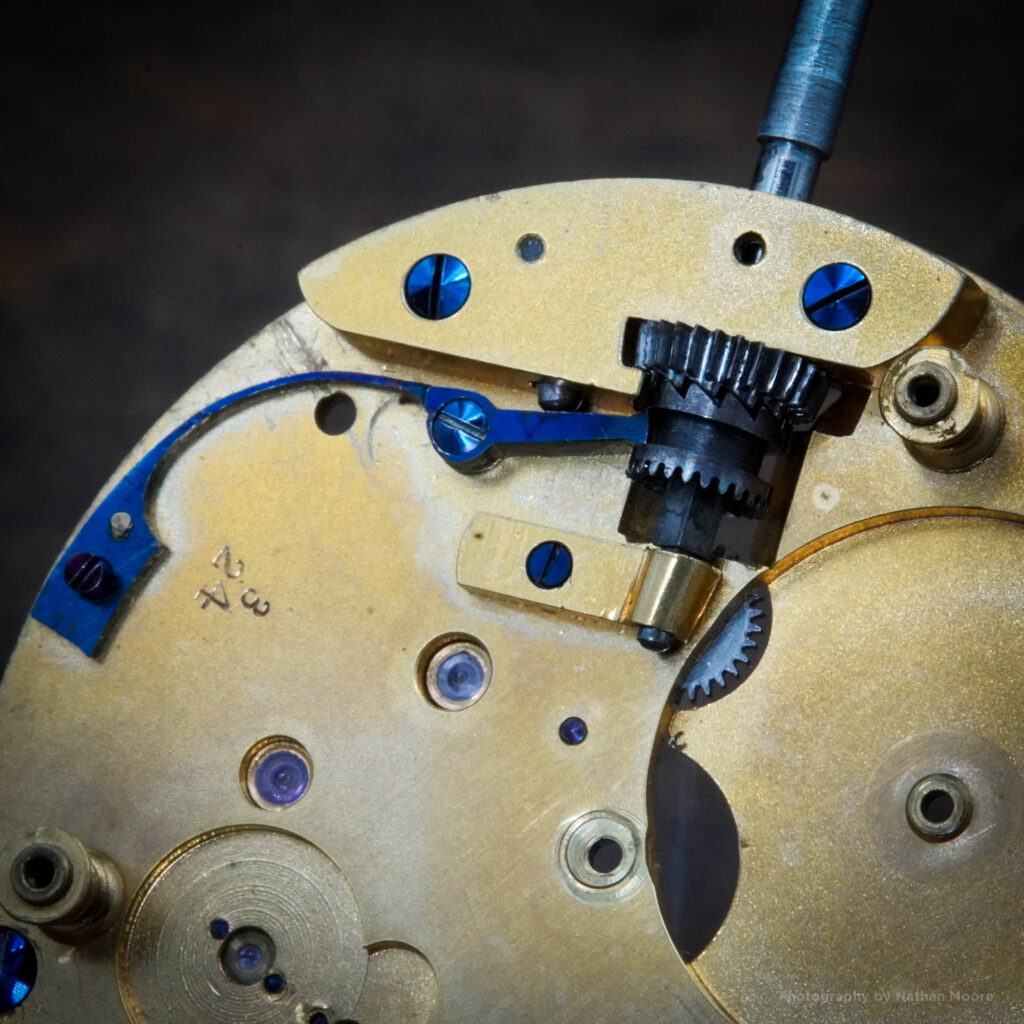
Rice and Gerry describe the design in the patent application:
“The nature of our invention consists in the construction and arrangement of the several parts of a stem-winding and setting watch, whereby the watch may be wound, when the winding-arbor is in one position, and by slightly withdrawing the winding-arbor from the stem of the watch, the winding-gear is disengaged, and the gear engaged for setting the hands.” U.S. Patent #78693
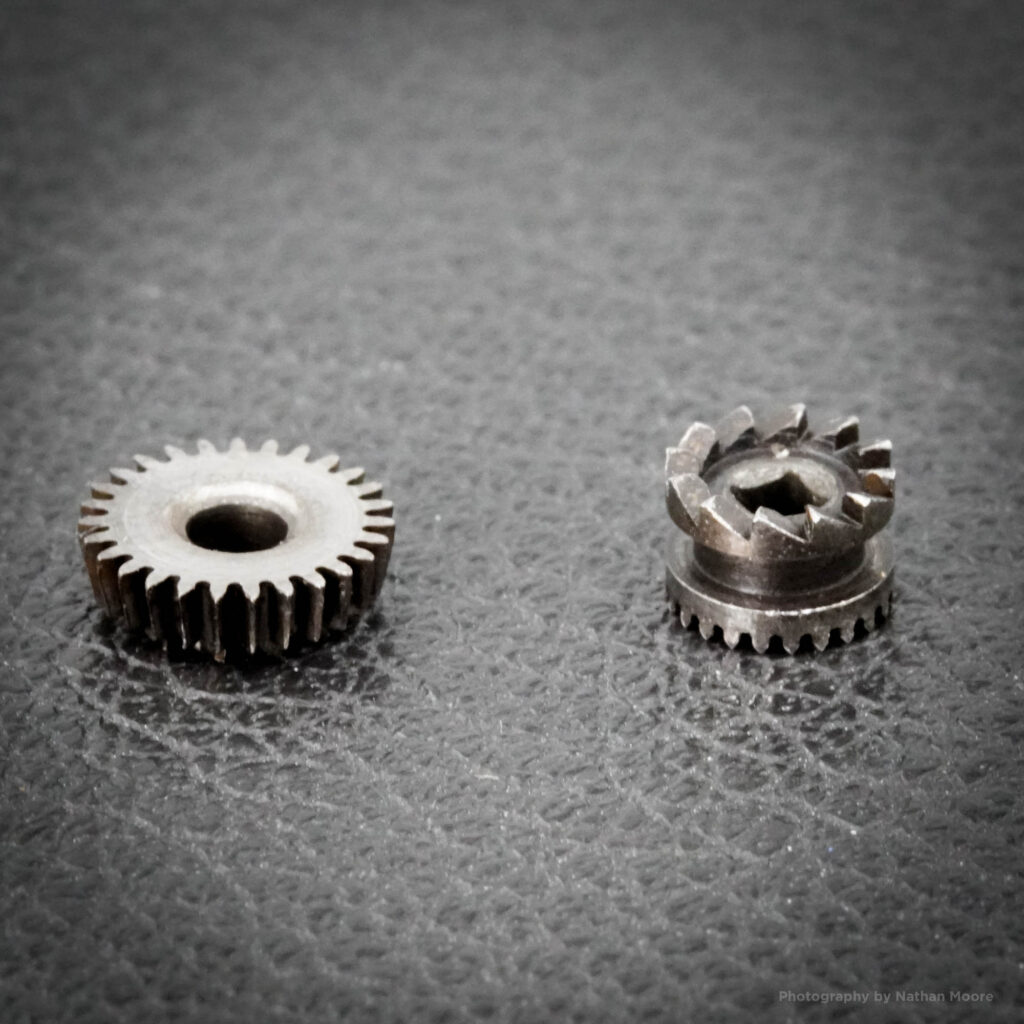
Rice and Gerry also communicate the distinction of their device compared to similar mechanisms in use at the time:
“As stem-winding watches are ordinarily constructed, the operation of winding the watch is performed by turning the winding-arbor which protrudes through the stem, and if it is desired to set the hands, it is either done with a key through the case, or a push-pin or lever, which protrudes from the working-parts through the case, is pressed in or moved, which disengages the winding-gear and engages the setting-gear.” U.S. Patent #78693

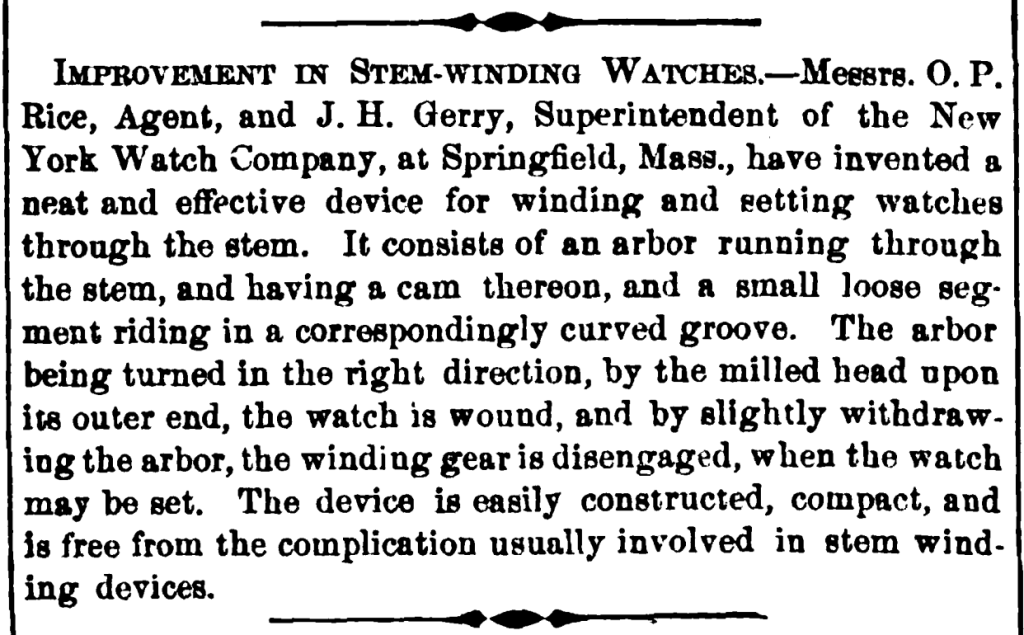
While this patented design was only used by the New York Watch Company for a year or two, it was subsequently adapted for use in the stem-wind/stem-set movements introduced by E. Howard & Co. around 1869.
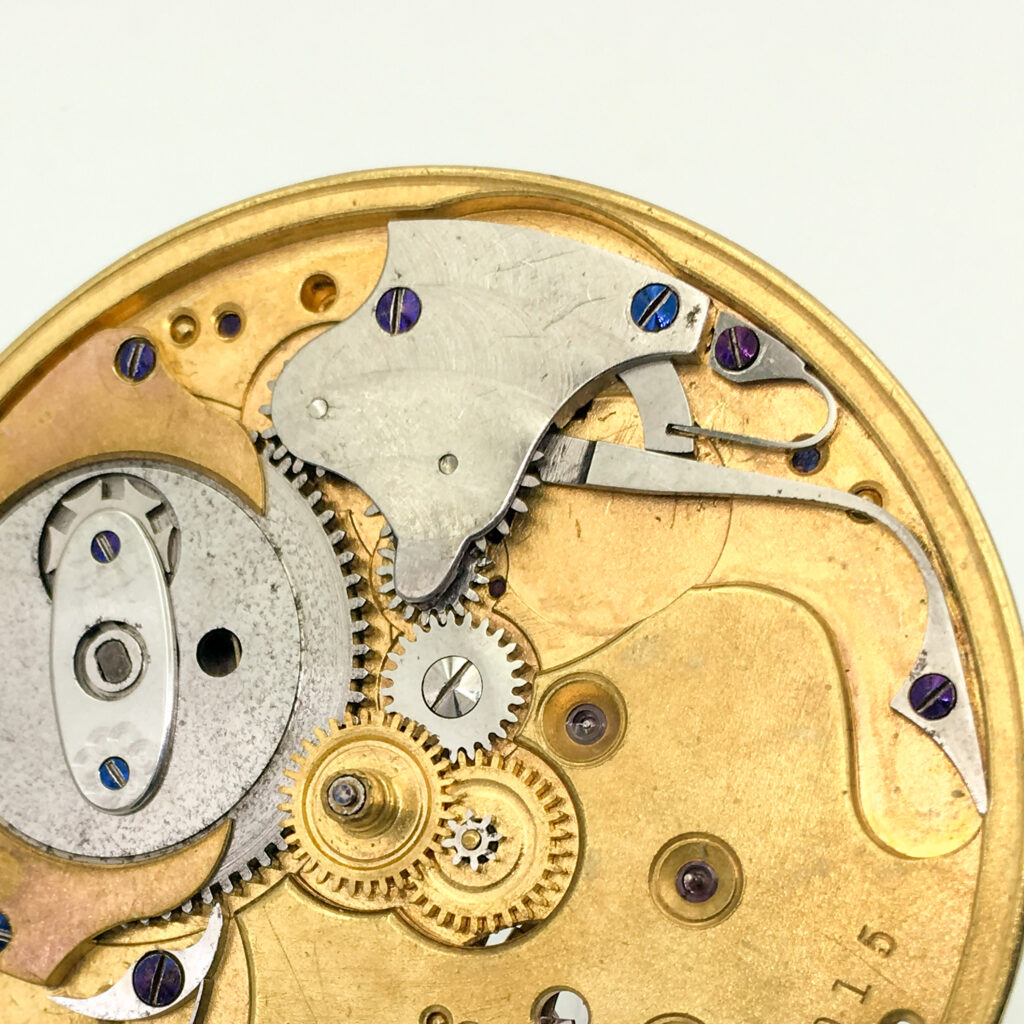
The benefits of Rice and Gerry’s design are evident, and the American watch industry used this shifting sleeve concept for decades following Rice and Gerry’s initial patent.

Note: The original article published in March 2023 has been revised to focus on the implementation of Rice & Gerry’s patent in the early “Springfield” movements manufactured by the New York Watch Company following the conclusion that these were introduced before the stem-wind/stem-set movements at the E. Howard factory.

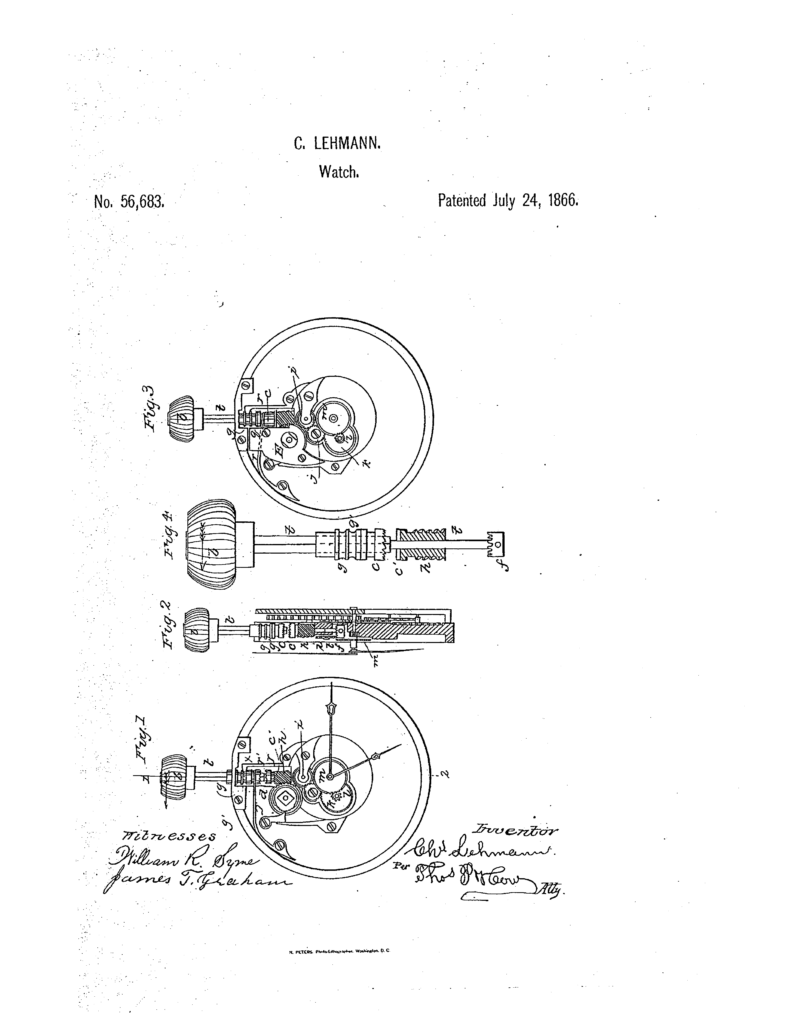

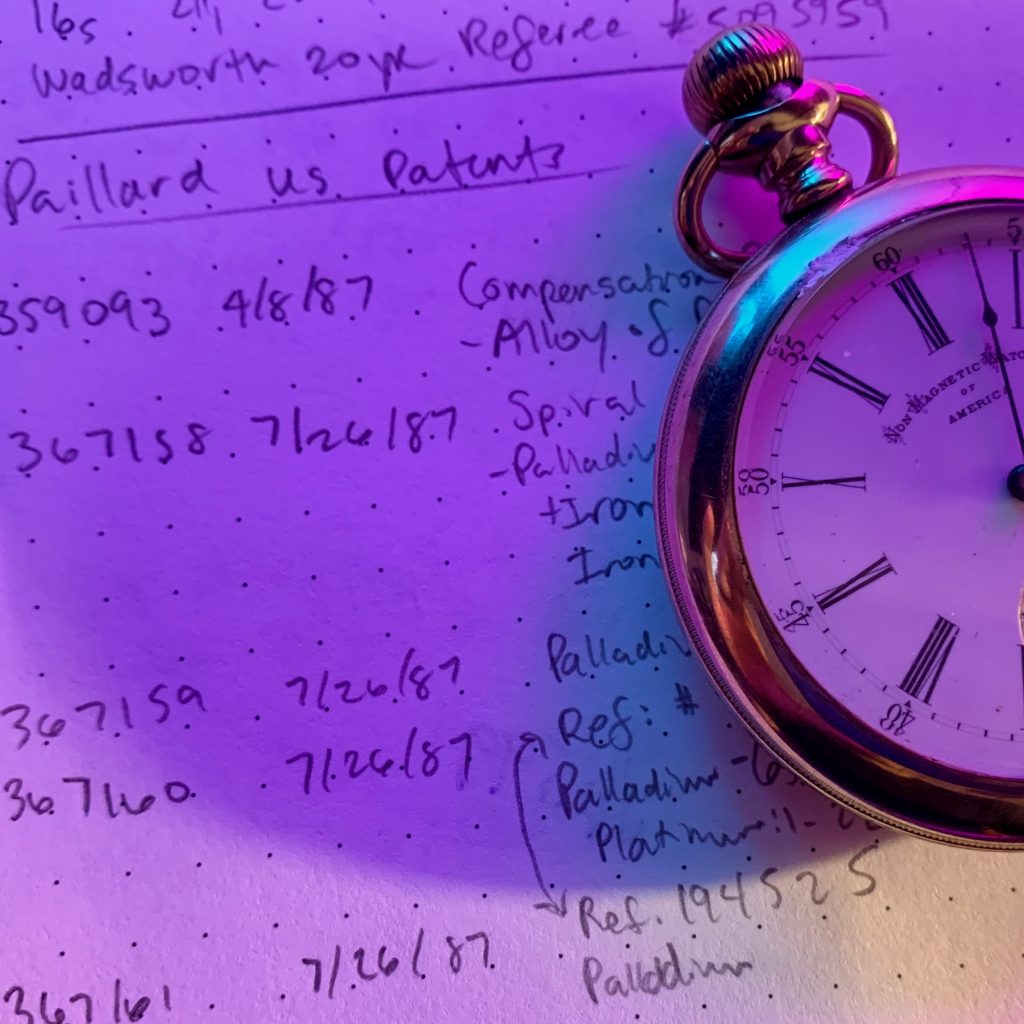

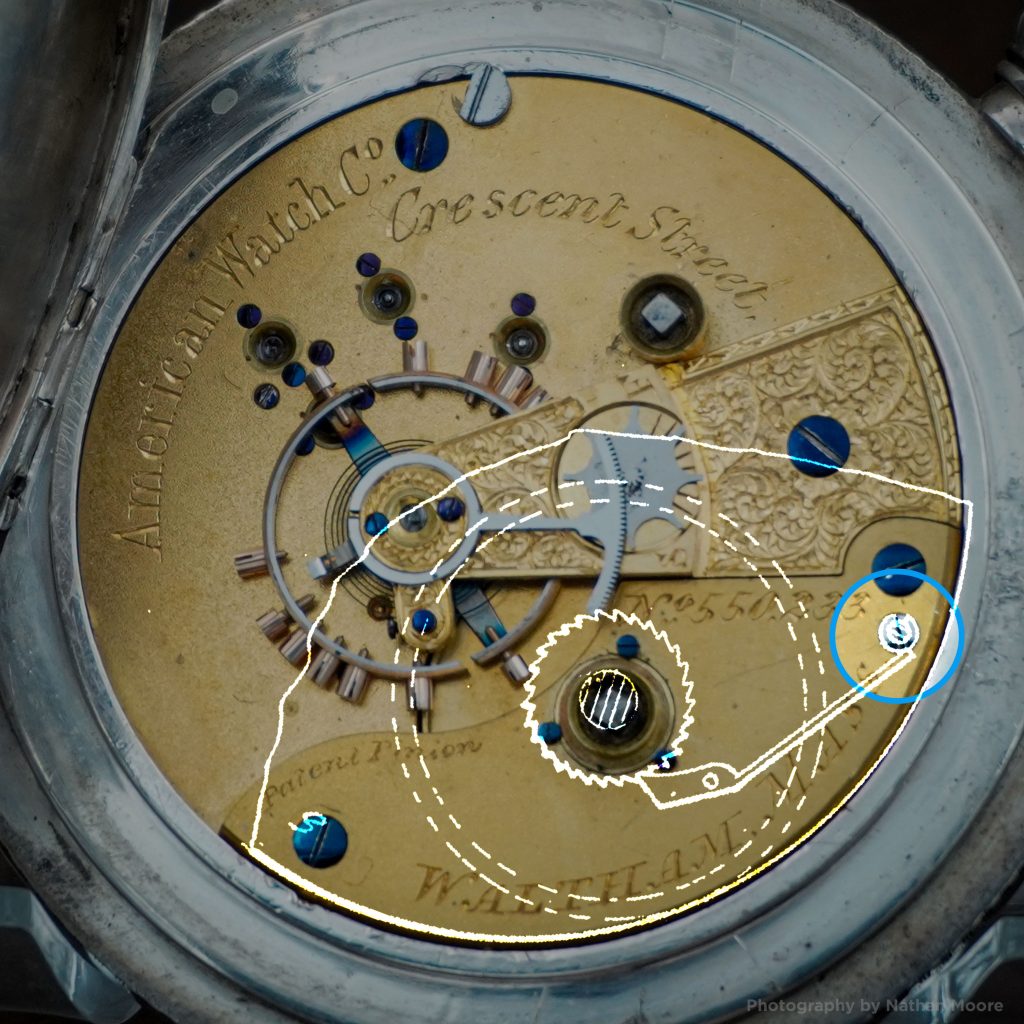
Very interesting article. Thank you
Interesting arrangement of the balance weights all perch in a row on ends of the balance arm on the #324. Joe
I enjoyed your Lincln watch story, Nathan. I’ll add that some years back I acquired a big, silver-cased, Waltham Model 1857 that was owned by W.W.R. Woodbury, mayor of Danville, Illinois in 1869, and a good friend of Abe Lincoln. Woodbury owned an apothecary shop that Lincoln would stop into while in Danville, where he often attended the County Court house. The watch is inscribed with Woodbury’s name.
Fantastic, Ken! Love the history.